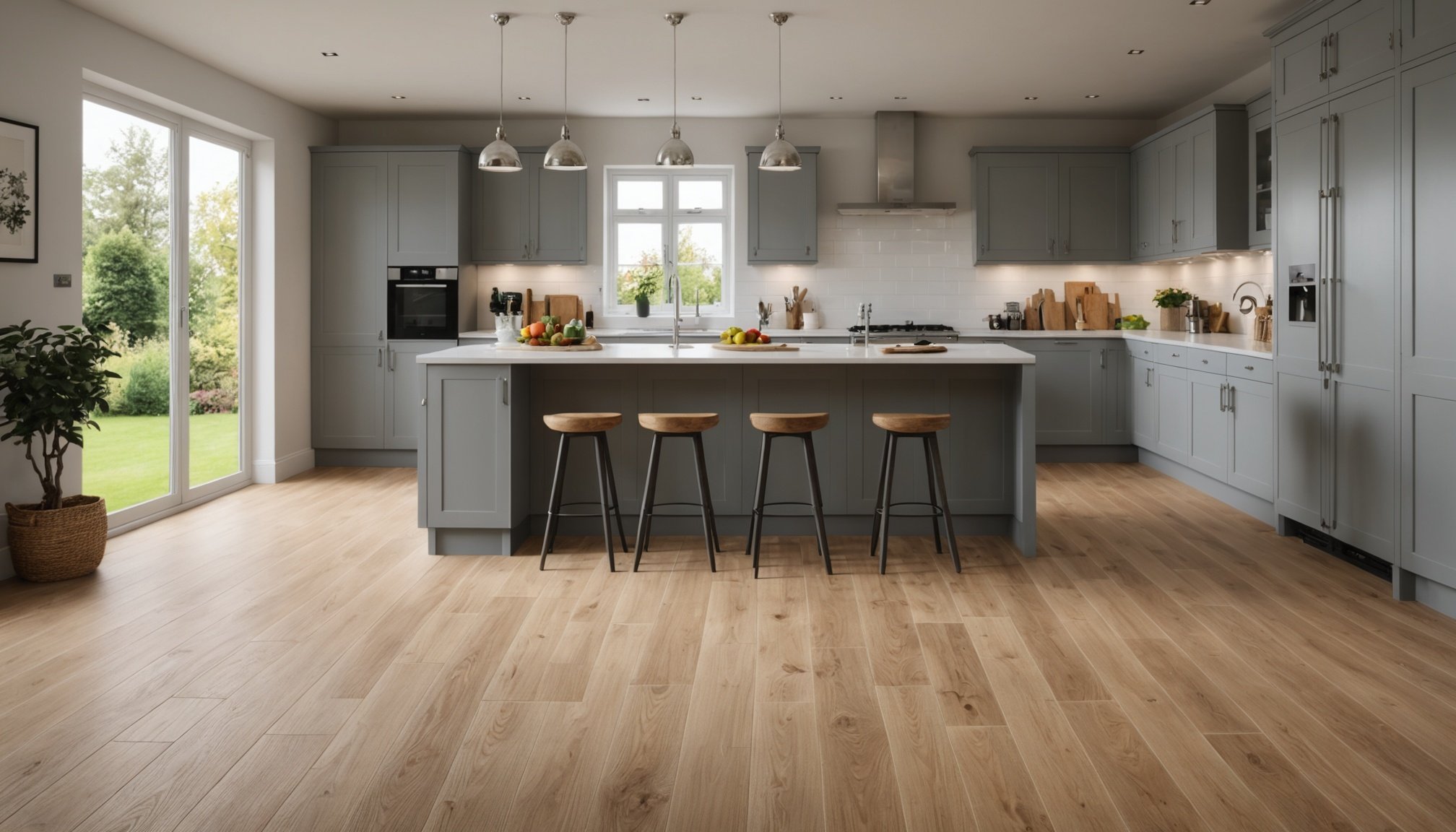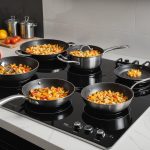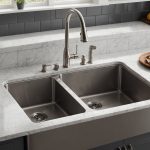Kitchens with underfloor heating demand flooring that enhances both comfort and style. Selecting the right material can maximize heat efficiency while complementing your design preferences. From classic tiles to modern vinyl, each option has unique benefits suitable for UK homes. Discover how to balance aesthetics with practicality, ensuring your kitchen remains a cozy sanctuary. Explore our top recommendations to transform your kitchen into a welcoming space that thrives on warmth and elegance.
Overview of Underfloor Heating in UK Kitchens
Underfloor heating has become increasingly popular in UK kitchens due to its numerous benefits. This system works by circulating warm water or using electric cables beneath the floor, providing even heat distribution. Unlike traditional radiators, underfloor heating doesn’t take up wall space, allowing for more flexible kitchen layouts.
This might interest you : Essential Guide to Selecting the Perfect Wine Decanter for Your UK Kitchen
Benefits of Underfloor Heating
This heating method offers several advantages. It provides a comfortable and cozy environment, keeping the kitchen warm during colder months. The system is energy-efficient, often reducing heating bills. Additionally, it’s a great way to enhance the aesthetic appeal of the kitchen by eliminating bulky radiators.
Kitchen Flooring Compatibility
Selecting the right flooring is crucial for optimal performance. Not all flooring materials are suitable for underfloor heating. Here’s a brief list of compatible options:
Also read : Essential Guide to Selecting the Perfect Wine Decanter for Your UK Kitchen
- Tile and stone: Excellent heat conductors and retain heat well.
- Laminate: Works well with specific underfloor heating systems.
- Vinyl: Suitable if specified for underfloor heating.
Ensuring compatibility between the heating system and kitchen flooring is essential for efficiency and longevity. A well-chosen combination enhances the overall kitchen experience, making it more enjoyable and cost-effective.
Best Flooring Options for Kitchens with Underfloor Heating
Choosing the right flooring options for kitchens with underfloor heating is crucial for maximizing efficiency and comfort.
Tile Flooring
Tile flooring, including ceramic and porcelain tiles, is a top choice due to its excellent heat retention properties. These tiles not only conduct heat efficiently, ensuring a warm kitchen environment, but they also offer aesthetic versatility. With a wide range of colors and patterns, tiles can complement any kitchen style. Their durability and low maintenance make them a practical option for busy kitchen spaces.
Engineered Wood
Engineered wood is another excellent option for kitchens with underfloor heating. It combines the beauty of natural wood with enhanced stability, making it suitable for heated environments. Available in various designs and finishes, engineered wood offers a stylish yet functional flooring solution. However, regular maintenance is essential to preserve its appearance and performance over time.
Luxury Vinyl Flooring
Luxury vinyl flooring stands out for its durability and water resistance, ideal for kitchen areas. Its comfort underfoot, even with underfloor heating, adds to its appeal. Moreover, luxury vinyl is cost-effective and offers design flexibility, allowing homeowners to achieve the desired look without compromising on quality.
Incorporating these flooring options can significantly enhance the kitchen experience.
Pros and Cons of Each Flooring Type
Understanding the pros and cons of different flooring materials helps in making informed decisions. Here's a detailed look:
Tile Flooring
Tile flooring is renowned for its durability and excellent heat retention. However, it can be cold to the touch without heating and may require professional installation, adding to initial costs. Tiles can also be slippery when wet, posing a safety concern.
Pros:
- Excellent heat retention
- Aesthetic versatility
Cons:
- Cold without heating
- Slippery surface
Engineered Wood
Engineered wood offers the warmth and beauty of natural wood with enhanced stability. Yet, it can be prone to scratches and requires regular maintenance to retain its appearance.
Pros:
- Natural wood appearance
- Stability in heated environments
Cons:
- Susceptible to scratches
- Maintenance required
Luxury Vinyl Flooring
Luxury vinyl is praised for its durability and water resistance, making it ideal for kitchens. Although cost-effective, it may not provide the same long-term value as natural materials.
Pros:
- Water-resistant
- Comfortable underfoot
Cons:
- Less value compared to natural materials
- Potential for wear over time
Understanding these factors aids in selecting the best flooring for your needs.
Installation Considerations
Understanding the nuances of installation can ensure a seamless setup.
Recommended Installation Practices
When setting up underfloor heating, the choice of flooring installation method is crucial. For tile and stone, a thin-set mortar is typically recommended to ensure proper adhesion and heat conduction. Engineered wood should be installed using a floating method to allow for expansion and contraction, while luxury vinyl often requires a glue-down technique for stability.
Importance of Professional Installation vs. DIY
While DIY projects can be satisfying, the intricacies of underfloor heating setup often necessitate professional expertise. Professional installation ensures compliance with safety standards and maximizes system efficiency. Incorrect installation can lead to uneven heating or damage, which can be costly to rectify.
Potential Challenges During Installation
Several challenges may arise during flooring installation with underfloor heating. These include ensuring subfloor compatibility, maintaining correct spacing between heating elements, and managing moisture levels.
- Subfloor compatibility: Essential for effective heat transfer.
- Spacing: Incorrect spacing can cause uneven heating.
- Moisture management: Critical to prevent damage to flooring materials.
Addressing these challenges proactively can lead to a successful and efficient heating system.
Maintenance Tips for Kitchen Flooring with Underfloor Heating
Ensuring longevity and efficiency through proper care
Best Practices for Maintaining Different Flooring Materials
Maintaining kitchen flooring with underfloor heating requires specific care to ensure durability and performance. For tile floors, regular sweeping and mopping with a non-abrasive cleaner helps preserve their finish. Engineered wood demands gentle cleaning with a damp mop and periodic refinishing to maintain its luster. Luxury vinyl benefits from vacuuming and using a mild detergent to avoid scratches and maintain its appearance.
Cleaning Recommendations Specific to Heated Floors
Heated floors require special attention to avoid damage. Use cleaning products that are compatible with the flooring material to prevent warping or discoloration. Avoid excessive water, which can seep into seams and affect the underfloor heating system.
- Tile: Use pH-neutral cleaners
- Engineered wood: Avoid steam mops
- Luxury vinyl: Opt for non-wax cleaners
Seasonal Maintenance and Checks for Underfloor Heating Systems
Regular checks of the underfloor heating system are essential. Inspect connections and thermostats to ensure optimal performance. Before winter, test the system to address any issues proactively. A professional inspection every few years can help identify potential problems, ensuring your flooring remains in excellent condition throughout the seasons.
Understanding Temperature Retention in Flooring
Exploring the nuances of heat retention and efficiency in kitchen flooring.
How Different Materials Retain Heat
The ability of flooring materials to retain heat is crucial for achieving optimal temperature retention. Tile and stone are renowned for their excellent heat conduction, maintaining warmth long after the heating system is turned off. Engineered wood, while not as efficient as tile, offers a moderate level of heat retention, balancing warmth and natural aesthetics. Luxury vinyl provides decent heat retention but may not match the efficiency of more traditional materials.
Impact on Energy Efficiency and Comfort
Effective temperature retention directly influences energy efficiency and comfort. Materials with high heat efficiency reduce the need for constant heating, leading to lower energy bills. A well-retained temperature ensures a consistently warm and comfortable kitchen environment, enhancing the overall experience.
Comparative Analysis of Flooring Types
Here’s a comparative look at how various flooring types perform in terms of heat distribution:
- Tile and Stone: Excellent retention, high efficiency
- Engineered Wood: Moderate retention, aesthetic appeal
- Luxury Vinyl: Decent retention, cost-effective
Understanding the heat efficiency of these materials helps in selecting the most suitable option for your kitchen, ensuring both comfort and cost-effectiveness.
Local Considerations for UK Homeowners
Understanding regional influences and regulations is crucial for effective flooring choices.
Importance of Local Climate and Building Regulations
When selecting flooring for kitchens with underfloor heating, UK homeowners must consider the regional climate and UK flooring regulations. The climate varies significantly across the UK, affecting how different materials perform. In colder regions, materials with high heat retention are preferred. Additionally, UK flooring regulations ensure safety and compliance, guiding homeowners in making informed decisions.
Recommendations Based on UK Regions
Different UK regions have specific requirements due to climatic variations. For instance, in Scotland, where winters are harsher, tile and stone are recommended for their superior heat retention. In contrast, engineered wood might suit the milder climates of Southern England.
- Scotland: Tile and stone
- Northern England: Engineered wood
- Southern England: Luxury vinyl
Sourcing Materials and Contractors
Finding quality materials and reliable contractors is essential. Homeowners should seek local suppliers familiar with UK flooring regulations. Engaging with experienced contractors ensures the installation meets regional standards, enhancing the system's efficiency and longevity.
"Local expertise in sourcing and installation is invaluable," notes a leading UK flooring expert, emphasizing the importance of regional knowledge.
Visual Guide and Resources
Enhancing decision-making with insightful visuals and resources.
Suggested Visuals for Decision-Making
When selecting flooring for underfloor heating, visuals can be instrumental. Consider using charts to compare the heat retention and energy efficiency of different materials. Images showcasing the aesthetic appeal of tile, engineered wood, and luxury vinyl can inspire design choices. A visual guide helps in understanding the practical implications of each option.
Resources for Further Research
To make informed decisions, access comprehensive resources on flooring options. Online platforms and home improvement magazines often feature detailed guides and expert reviews. These resources provide insights into installation techniques, maintenance tips, and the latest trends in kitchen flooring.
Suppliers and Professional Services in the UK
Engaging with reputable suppliers and professional services is crucial. Local suppliers offer materials that comply with UK flooring regulations. Professional services ensure proper installation and adherence to safety standards. Here's a bulleted list of what to look for:
- Reputation and customer reviews
- Compliance with UK regulations
- Experience with underfloor heating systems
Utilizing these resources and visuals can significantly enhance your flooring selection process, ensuring a warm and efficient kitchen environment.













